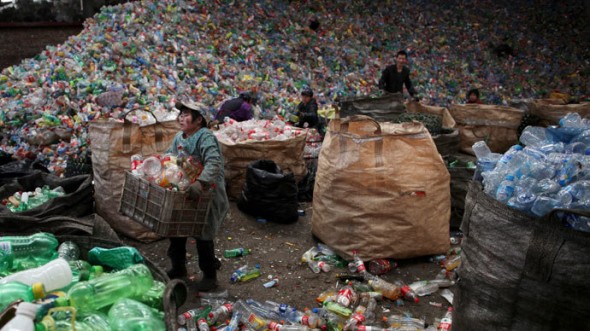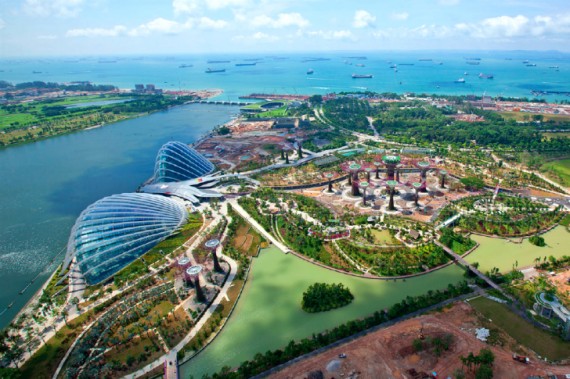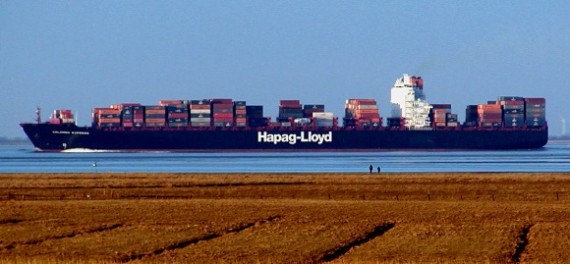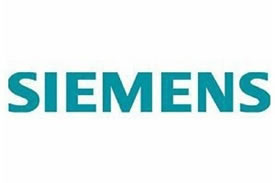 Siemens Energy will be soon opening its first U.S. based wind turbine R&D competence center in Boulder, Colorado. The facility is expected to employ an estimated 50 people and will focus on atmospheric science research, aerodynamic blade design, structural dynamics, wind turbine dispatch prediction and reliability. The new Siemens R&D Center is expected to create 12-15 green-collar positions in the first year, followed by 5-10 additional careers every year thereafter, resulting in approximately 50 new positions by 2013. Most employees will be new hires with a PhD or master’s degree in the desired disciplines.
Siemens Energy will be soon opening its first U.S. based wind turbine R&D competence center in Boulder, Colorado. The facility is expected to employ an estimated 50 people and will focus on atmospheric science research, aerodynamic blade design, structural dynamics, wind turbine dispatch prediction and reliability. The new Siemens R&D Center is expected to create 12-15 green-collar positions in the first year, followed by 5-10 additional careers every year thereafter, resulting in approximately 50 new positions by 2013. Most employees will be new hires with a PhD or master’s degree in the desired disciplines.
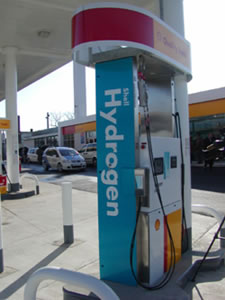 The fuel crisis has many switching to the alternative transport solutions, but finding a station that sells hydrogen or is capable to charge your electric vehicle in a jiffy is very rare. That could soon change as Shell is planning to sell hydrogen fuel from its gas stations in LA, as part of a research program run by the US Department of Energy in conjunction with GM. Shell’s hydrogen is created on-site with an electrolyzer, but all parties agree that this is only a short-term solution. Shell will build a few more stations on its own in the next few months, and they will be part of “mini networks” of hydrogen filling stations that will hopefully help spark mass production of fuel cell vehicles. These are needed in big cities since the only emission would be water, but paradoxically, the source for the hydrogen is fossil fuels.
The fuel crisis has many switching to the alternative transport solutions, but finding a station that sells hydrogen or is capable to charge your electric vehicle in a jiffy is very rare. That could soon change as Shell is planning to sell hydrogen fuel from its gas stations in LA, as part of a research program run by the US Department of Energy in conjunction with GM. Shell’s hydrogen is created on-site with an electrolyzer, but all parties agree that this is only a short-term solution. Shell will build a few more stations on its own in the next few months, and they will be part of “mini networks” of hydrogen filling stations that will hopefully help spark mass production of fuel cell vehicles. These are needed in big cities since the only emission would be water, but paradoxically, the source for the hydrogen is fossil fuels.
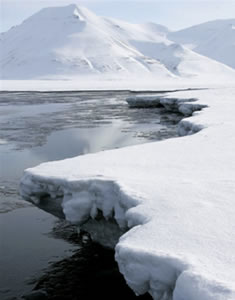 Globalization may have brought the world closer in terms of producing goods cheaper and yet maintaining the costs and quality of the produced product. This however has caused a rampant illness to the eco system of the planet, termed as Ecological Greenlash. Ecological greenlash occurs when human action aimed at increasing the supply of a desired ecosystem service (e.g. food production) inadvertently degrade other ecosystem services (e.g. climatic regulation or pollination) that are essential for the provision of the desired ecosystem service, consequently reducing the supply of the desired ecosystem service. The world is also becoming highly interconnected through the movement of people and the transport of goods locally to globally. Among ecologists, there is an increasing realization that these connections can have profound influences on the long-term dynamics of ecological systems.
Globalization may have brought the world closer in terms of producing goods cheaper and yet maintaining the costs and quality of the produced product. This however has caused a rampant illness to the eco system of the planet, termed as Ecological Greenlash. Ecological greenlash occurs when human action aimed at increasing the supply of a desired ecosystem service (e.g. food production) inadvertently degrade other ecosystem services (e.g. climatic regulation or pollination) that are essential for the provision of the desired ecosystem service, consequently reducing the supply of the desired ecosystem service. The world is also becoming highly interconnected through the movement of people and the transport of goods locally to globally. Among ecologists, there is an increasing realization that these connections can have profound influences on the long-term dynamics of ecological systems.
 Tokyo will target reducing greenhouse gas emission by a total of 25 percent by 2020 from the 2000 level. Shintaro Ishihara, an acclaimed novelist turned politician, is known for his blunt nationalistic remarks including denunciations of other Asian nations. But he is also known for environmental consciousness and imposed a total ban on heavily polluting diesel vehicles inside Tokyo. He has now proposed a new ‘cap-and-trade’ system to manage carbon emissions in Tokyo, Japan. Under a “cap-and-trade” system starting in 2010, the Tokyo government would require major businesses to reduce carbon emissions while creating an economic incentive by allowing the trade of emissions credits. The move by Tokyo — which with 13 million people is one of the world’s largest cities — is reminiscent of action taken by California, the biggest US state, which launched climate measures despite resistance from President George W. Bush. Japanese Prime Minister Yasuo Fukuda has vowed to push forward action on global warming at the July 7-9 summit of the Group of Eight rich nations. Environmental activists said they hoped the rest of Japan would follow Ishihara on climate change.
Tokyo will target reducing greenhouse gas emission by a total of 25 percent by 2020 from the 2000 level. Shintaro Ishihara, an acclaimed novelist turned politician, is known for his blunt nationalistic remarks including denunciations of other Asian nations. But he is also known for environmental consciousness and imposed a total ban on heavily polluting diesel vehicles inside Tokyo. He has now proposed a new ‘cap-and-trade’ system to manage carbon emissions in Tokyo, Japan. Under a “cap-and-trade” system starting in 2010, the Tokyo government would require major businesses to reduce carbon emissions while creating an economic incentive by allowing the trade of emissions credits. The move by Tokyo — which with 13 million people is one of the world’s largest cities — is reminiscent of action taken by California, the biggest US state, which launched climate measures despite resistance from President George W. Bush. Japanese Prime Minister Yasuo Fukuda has vowed to push forward action on global warming at the July 7-9 summit of the Group of Eight rich nations. Environmental activists said they hoped the rest of Japan would follow Ishihara on climate change.
 Senate on Monday is to debate a Democratic-backed bill to dramatically cut harmful greenhouse gas emissions by 2050.The bill uses a “cap-and-trade” system wherein the government would cap the amount of pollution a company is allowed to emit — which would be lowered each year — but would also give companies some flexibility by allowing them to buy pollution credits from companies whose emissions fall below their caps. Under the bill, the government would auction off the credits and use some of the proceeds to help consumers who are expected get hit by higher energy costs. The defense thinks these higher temperatures are going to cause terrible problems all over the world — more extreme weather events, vectors that we haven’t seen before. The military people say that it’s going to be a cause of wars in the future. But many Republicans say the bill’s costs are too high. Speaking at a White House event Monday, President Bush warned the additional costs associated with the bill, which he estimated at $6 trillion, would be too much of a burden on the American economy.
Senate on Monday is to debate a Democratic-backed bill to dramatically cut harmful greenhouse gas emissions by 2050.The bill uses a “cap-and-trade” system wherein the government would cap the amount of pollution a company is allowed to emit — which would be lowered each year — but would also give companies some flexibility by allowing them to buy pollution credits from companies whose emissions fall below their caps. Under the bill, the government would auction off the credits and use some of the proceeds to help consumers who are expected get hit by higher energy costs. The defense thinks these higher temperatures are going to cause terrible problems all over the world — more extreme weather events, vectors that we haven’t seen before. The military people say that it’s going to be a cause of wars in the future. But many Republicans say the bill’s costs are too high. Speaking at a White House event Monday, President Bush warned the additional costs associated with the bill, which he estimated at $6 trillion, would be too much of a burden on the American economy.
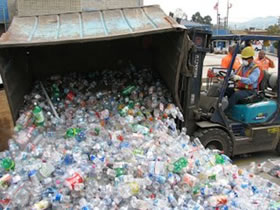 A lot of the plastic bottles we consume either end up in land fills or are sadly disposed off into the sea. But since most of us live inland we are unaware of the magnitude at which bottles are disposed of into the sea. A raft build from over 15,000 plastic bottles set sail from Long Beach, CA on Sunday with the intended destination of Hawaii. The trip is expected to last 6 weeks, and was planned to raise awareness around plastic pollution in the Pacific Ocean, a problem that has recently surfaced in the media. Due to ocean currents, a large area of plastic waste (twice the size of the United States) has collected in the Pacific.
A lot of the plastic bottles we consume either end up in land fills or are sadly disposed off into the sea. But since most of us live inland we are unaware of the magnitude at which bottles are disposed of into the sea. A raft build from over 15,000 plastic bottles set sail from Long Beach, CA on Sunday with the intended destination of Hawaii. The trip is expected to last 6 weeks, and was planned to raise awareness around plastic pollution in the Pacific Ocean, a problem that has recently surfaced in the media. Due to ocean currents, a large area of plastic waste (twice the size of the United States) has collected in the Pacific.
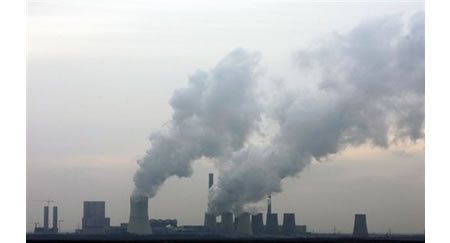
Carbon trading is sometimes seen as a better approach than a direct carbon tax or direct regulation. By solely aiming at the cap it avoids the consequences and compromises that often accompany those other methods. It can be cheaper and politically preferable for existing industries because the initial allocation of allowances is often allocated with a grandfathering provision where rights are issued in proportion to historical emissions. Germany is on its way to earn more than $1.55 billion this year in the sale of carbon rights to 12,000 utilities and energy-intensive plants across the continent.
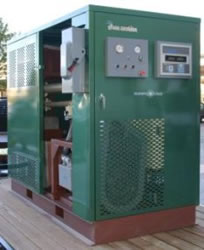 The options we have now-a- days for alternate energy seem to be expanding at a fierce pace. A typical home solar installation can generate between two and four kilowatts, while Google’s solar array at its corporate headquarters–considered the largest in the U.S.–is 1.6 megawatts. Now a company called ElectraTherm has developed a 50-kilowatt machine that uses industrial waste heat as its “fuel.”The machine uses an organic Rankine cycle to heat liquids which are turned into a vapor that turns a turbine to make electricity. The thermoelectric effect has been known since the early 19th century. But the idea of making electricity from heat appears to be getting more attention.
The options we have now-a- days for alternate energy seem to be expanding at a fierce pace. A typical home solar installation can generate between two and four kilowatts, while Google’s solar array at its corporate headquarters–considered the largest in the U.S.–is 1.6 megawatts. Now a company called ElectraTherm has developed a 50-kilowatt machine that uses industrial waste heat as its “fuel.”The machine uses an organic Rankine cycle to heat liquids which are turned into a vapor that turns a turbine to make electricity. The thermoelectric effect has been known since the early 19th century. But the idea of making electricity from heat appears to be getting more attention.
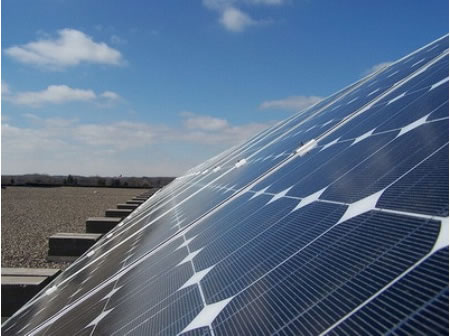
No one knows lighting like the Italians, its no wonder that the best chandeliers are from Italy. The countries energy requirements are rising, like the rest of the world, but it hasn’t been able to get on the solar power bandwagon yet. The hindrance has so far been the confusion over prices and maintenance cost involved. However the mayor in a small town in Milan has managed to light up a cemetery with a photovoltaic plant composed of 18 solar panels, providing the cemetery with free lighting and saving 20% on the billing cost. Enel SpA, Italy’s largest utility, and Sharp Corp., a leader in solar power technologies have joined hands to set up joint solar power generation plants in Italy, which are expected to have an output capacity of more than 160 megawatts by the end of 2011 and supply 81.500 Italian families with energy.
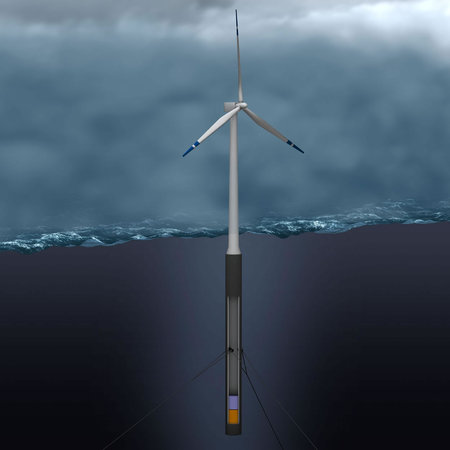
State-controlled Norwegian oil company StatoilHydro has decided to build the world’s first full scale floating wind turbine, Hywind, and test it over a two-year period offshore Karmøy. StatoilHydro has developed HyWind based on floating concrete constructions familiar from North Sea oil installations. The rotor blades on the floating wind turbine will have a diameter of 80 metres, and the nacelle will tower some 65 metres above the sea surface. The floatation element will have a draft of some 100 metres below the sea surface, and will be moored to the seabed using three anchor points. The wind turbine can be located in waters with depths ranging from 120 to 700 metres.
 Siemens Energy will be soon opening its first U.S. based wind turbine R&D competence center in Boulder, Colorado. The facility is expected to employ an estimated 50 people and will focus on atmospheric science research, aerodynamic blade design, structural dynamics, wind turbine dispatch prediction and reliability. The new Siemens R&D Center is expected to create 12-15 green-collar positions in the first year, followed by 5-10 additional careers every year thereafter, resulting in approximately 50 new positions by 2013. Most employees will be new hires with a PhD or master’s degree in the desired disciplines.
Siemens Energy will be soon opening its first U.S. based wind turbine R&D competence center in Boulder, Colorado. The facility is expected to employ an estimated 50 people and will focus on atmospheric science research, aerodynamic blade design, structural dynamics, wind turbine dispatch prediction and reliability. The new Siemens R&D Center is expected to create 12-15 green-collar positions in the first year, followed by 5-10 additional careers every year thereafter, resulting in approximately 50 new positions by 2013. Most employees will be new hires with a PhD or master’s degree in the desired disciplines.






